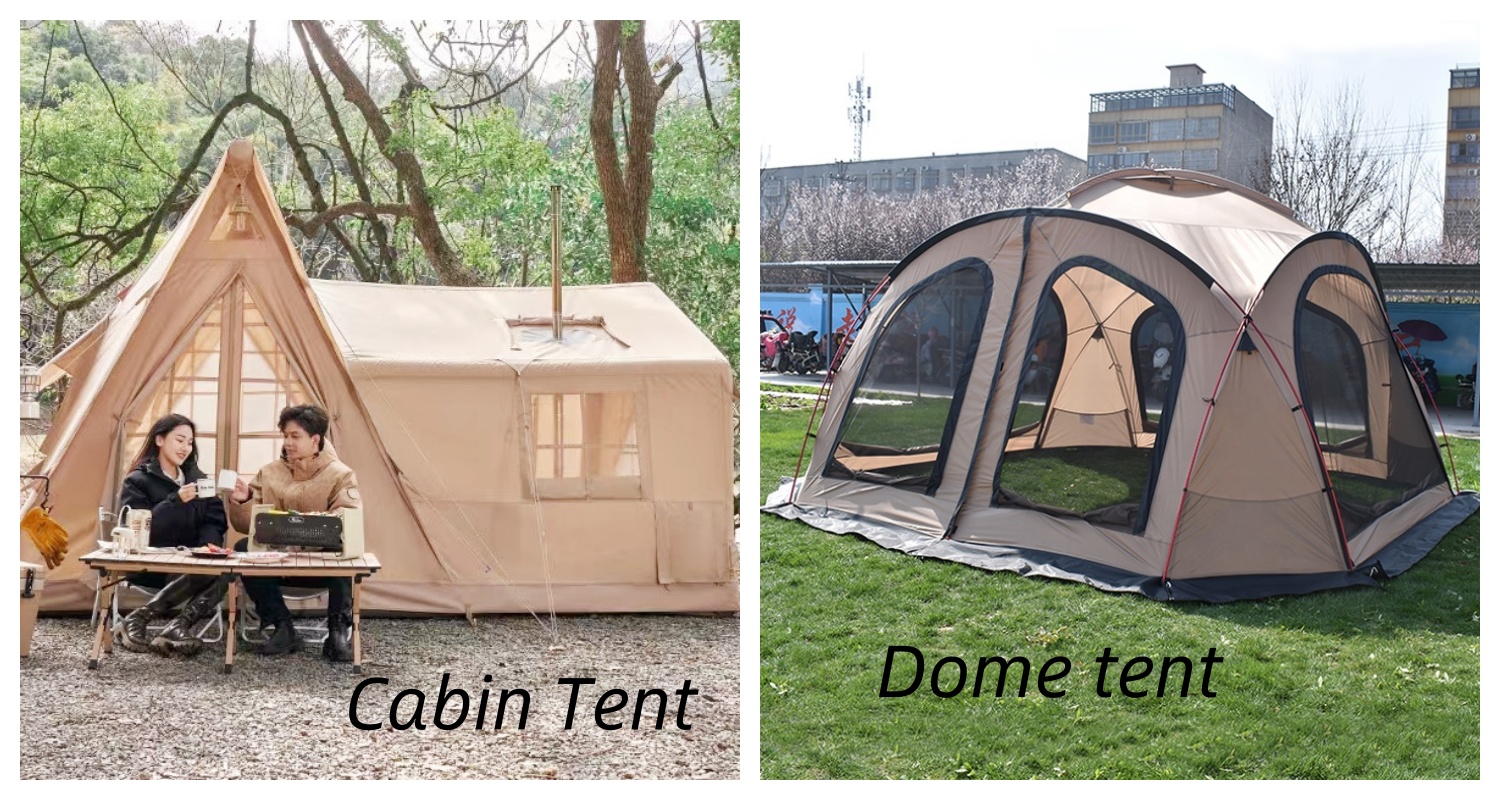
When it comes to outdoor adventures, your tent choice can significantly affect comfort, convenience, and safety. Two of the most popular types of tents are cabin tents and normal (dome-style) tents. While both provide shelter, their designs, setups, durability, and ideal use cases differ significantly.
This guide covers everything you need to know to choose the right type for your camping style.
A cabin tent is a large, rectangular tent with nearly vertical walls. Its structure mimics that of a small cabin or room. These tents are typically designed for car camping or longer stays and are often favored by families or large groups.
Straight/vertical walls maximize usable space.
High ceilings allow adults to stand and walk around easily.
Multiple rooms or dividers for privacy.
Large doors/windows for ventilation and visibility.
Heavy-duty poles and fabrics (steel or thick fiberglass poles).
Roomy and Comfortable: Great for tall individuals and families. You can bring cots, furniture, and even tables inside.
Home-like Feel: Feels less like camping and more like glamping.
Ideal for Base Camps: Perfect for multi-day stays where setup time is worth it.
Great Organization: Gear lofts, hanging shelves, and dividers add structure and order to your living space.
Heavy and Bulky: Not suitable for hiking or backpacking. Requires a transport vehicle.
Longer Setup Time: More poles and parts can take 15–30 minutes or longer to set up.
Wind Vulnerability: Tall, flat walls act like sails in strong winds. May require extra guy lines and stakes.
More Expensive: Higher-end materials and larger designs increase the price.
A normal tent, most often a dome-style tent, is characterized by a rounded or sloped design created by crossing flexible poles. It’s the go-to option for casual campers, backpackers, and those looking for portability.
Curved, aerodynamic shape for stability in the wind.
Quick and easy assembly—often freestanding.
Lightweight materials for easy transport.
Compact footprint suitable for small campsites.
Portable and Lightweight: Ideal for hiking, backpacking, and bike camping.
Quick Setup: Some pop-up models can be pitched in under 5 minutes.
Budget-Friendly: Great for beginners or occasional campers.
Weather Resistant: Sheds wind and rain efficiently due to sloped sides.
Limited Space: Lower ceilings and curved walls reduce interior volume.
Not Ideal for Large Groups: Most models fit 2–4 people snugly.
Minimal Interior Comfort: Less room for gear, standing, or movement.
Fewer Features: Basic models often lack storage pockets, room dividers, or extra vestibules.
| Feature | Cabin Tent | Dome Tent (Normal Tent) |
| Setup Time | Moderate to Long (15–30 min) | Quick (5–10 min) |
| Interior Height | High – Full standing height | Low to moderate – may need to crawl or stoop |
| Weight & Portability | Heavy (20–60 lbs) – not portable | Lightweight (2–15 lbs) – great for travel |
| Ease of Use | Requires more experience | Beginner-friendly setup |
| Weather Performance | Good for fair weather, poor in wind | Excellent in wind and rain |
| Best Use Case | Car camping, family trips, group events | Hiking, backpacking, festivals, and solo trips |
| Price Range | $$–$$$$ (mid to high range) | $–$$$ (more affordable) |
| Storage Options | Shelves, organizers, dividers | Limited to basic pockets |
| Durability | Often high, but it depends on the brand/model | Varies widely depending on price and brand |
| Ventilation | Multiple large mesh windows, often great | Adequate; may need rainfly ventilation |
Best Choice: Cabin Tent
Why? Comfort, space, and the ability to move around freely. Kids can have their room, and parents can stand while dressing or organizing.
Best Choice: Dome Tent
Why? Lightweight, compact, and easy to carry in a backpack. Dome tents handle wind and rain better in alpine settings.
Best Choice: Dome Tent
Why? Fast setup, affordable, and just enough space to crash between events.
Best Choice: Cabin Tent
Why? Worth the extra setup for long-term comfort, better storage, and privacy.
Check the Tent’s Peak Height: If you value standing room, aim for at least 6 feet in height.
Know Your Group Size: Always get a tent rated for one or two people more than your group size for comfort.
Review Weather Ratings: Look for waterproof ratings (in mm), proper ventilation, and strong guy-line systems.
Look at Floor Dimensions: Make sure sleeping pads or mattresses fit comfortably.
Don’t Overbuy: If you’re only camping a few weekends a year, a mid-range dome tent may be all you need.
Choose a Cabin Tent if comfort, space, and longer stays are priorities—and you're not carrying your tent far.
Choose a Dome Tent if you need mobility, ease, and protection from the elements in a lightweight package.
Both tents have their place in the outdoor world. Understanding your camping habits, group size, and destination will help you pick the right one for the job.